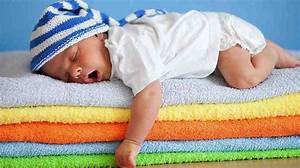Yes, Today is ‘WORLD SLEEP DAY‘ and you are probably in bed hoping this post will put you back to sleep.
This study aimed to synthesise the best available evidence on the safety and efficacy of using moxibustion and/or acupuncture to manage cancer-related insomnia (CRI).
The PRISMA framework guided the review. Nine databases were searched from its inception to July 2020, published in English or Chinese. Randomised clinical trials (RCTs) of moxibustion and or acupuncture for the treatment of CRI were selected for inclusion. The methodological quality was assessed using the method suggested by the Cochrane collaboration. The Cochrane Review Manager was used to conduct a meta-analysis.
Fourteen RCTs met the eligibility criteria; 7 came from China. Twelve RCTs used the Pittsburgh Sleep Quality Index (PSQI) score as continuous data and a meta-analysis showed positive effects of moxibustion and or acupuncture (n = 997, mean difference (MD) = -1.84, 95% confidence interval (CI) = -2.75 to -0.94, p < 0.01). Five RCTs using continuous data and a meta-analysis in these studies also showed significant difference between two groups (n = 358, risk ratio (RR) = 0.45, 95% CI = 0.26-0.80, I 2 = 39%).
The authors concluded that the meta-analyses demonstrated that moxibustion and or acupuncture showed a positive effect in managing CRI. Such modalities could be considered an add-on option in the current CRI management regimen.
Even at the risk of endangering your sleep, I disagree with this conclusion. Here are some of my reasons:
- Chinese acupuncture trials invariably are positive which means they are as reliable as a 4£ note.
- Most trials were of poor methodological quality.
- Only one made an attempt to control for placebo effects.
- Many followed the A+B versus B design which invariably produces (false-) positive results.
- Only 4 out of 14 studies mentioned adverse events which means that 10 violated research ethics.
Sorry to have disturbed your sleep!


Acupuncture is of course just a theatrical placebo, and thus quite useless for treating insomnia.
However, by pure coincidence(*), my local news Website just published this article:
https://www.rtvoost.nl/nieuws/2074533/ongezellige-verlichting-zorgt-voor-topsfeer-in-zwols-zorghuis-voor-dementerenden (in Dutch, unfortunately Google Translate does not work for this link)
Translated summary:
Night-time insomnia is a well-known problem for the elderly, and especially for those suffering from dementia. Many of these patients have a tendency to nod off during the day, only to wake up several times at night, often in a state of confusion. Some start wandering around in the dark, with serious risk of harm, causing a lot of extra work for night-shift healthcare personnel.
One home for the elderly came up with an extremely simple and safe solution that may dramatically improve things: just increase daytime light levels for the residents by means of so-called daylight lamps. Up until now, many of these homes for the elderly have ‘cosy’ lighting, but these light levels (around 300 lux) are not sufficient to synchronize the biological clock of elderly people; this problem is compounded by the fact that these people live inside for almost all the time, further reducing their daylight exposure. Also, deteriorating eyesight plays a role.
After installing extra lighting to raise the light level to 1000 lux, results were ‘astounding’, according to several healthcare workers. Residents were far more alert and less sleepy during the day, and tended to wake up significantly less during the night. It appears that this ‘cheerless glare’ significantly improved the everyone’s quality of life – not just for the residents themselves, but also for the personnel caring for these people.
Please note that at this moment, these results are just an ‘N=1’ anecdote. However, it is quite plausible that this bright-light treatment could indeed have beneficial effects, and I think that this certainly merits a more in-depth trial. And I think that this would be a shining example (pun intended) of a wonderful non-pharmaceutical intervention to treat insomnia, that might also help other groups of people who so far rely on medication.
*: At least I see no reference to World Sleep Day.
That’s very interesting. It sounds highly credible to me.
Colour temperature of the light could also be an important factor. It should be bright, and at around 5,600 Degrees K during the day, and much lower in colour temperature in the evenings.
Thanks for the additional reportage on this topic. Finally, something worth exploring rather than endless attempt to justify needling!